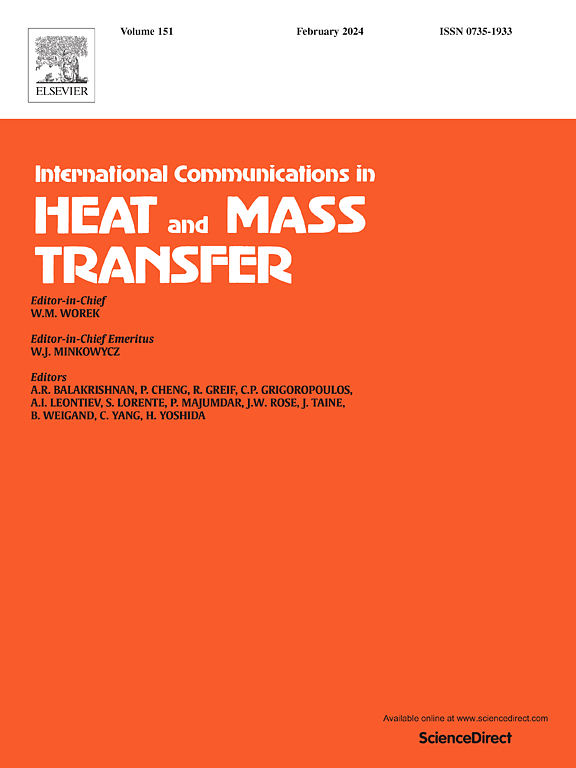Effect of trapezoidal groove hydrophobic sites on bubble nucleation: A molecular dynamics study
IF 6.4
2区 工程技术
Q1 MECHANICS
International Communications in Heat and Mass Transfer
Pub Date : 2025-02-21
DOI:10.1016/j.icheatmasstransfer.2025.108751
引用次数: 0
Abstract
In this study, a bubble nucleation model for different hydrophobic sections within grooved surfaces is developed by molecular dynamics method to explore the effects of different hydrophobic sites on bubble nucleation on the surface of hydrophobic/hydrophilic hybrid wettability grooves. The results indicate that the time for bubble nucleation is delayed with an increase in the hydrophobic surface area. The order of bubble nucleation time from fastest to slowest is as follows: the BphoSphi (hydrophobic bottom wall and hydrophilic sidewall) surface, the BphiSSpho (hydrophilic bottom wall and hydrophobic single-sidewall) surface, the BphiDSpho (hydrophilic bottom wall and hydrophobic double-sidewall) surface, and the Apho (all-hydrophobic) surface. Additionally, the effect of varying hydrophobic areas at the groove bottom on bubble nucleation is investigated. The results show that the HBphoSphi (half hydrophobic bottom wall and hydrophilic sidewall) surface and the BphoSphi surface are almost the same, whereas the bubble nucleation time for the QBphoSphi (quarter hydrophobic bottom wall and hydrophilic sidewall) surface is significantly later. A slight change in the hydrophobic area at the bottom of the groove has a minimal effect on heat transfer, but an excessively small hydrophobic area is unfavorable for bubble nucleation.
求助全文
约1分钟内获得全文
求助全文
来源期刊
CiteScore
11.00
自引率
10.00%
发文量
648
审稿时长
32 days
期刊介绍:
International Communications in Heat and Mass Transfer serves as a world forum for the rapid dissemination of new ideas, new measurement techniques, preliminary findings of ongoing investigations, discussions, and criticisms in the field of heat and mass transfer. Two types of manuscript will be considered for publication: communications (short reports of new work or discussions of work which has already been published) and summaries (abstracts of reports, theses or manuscripts which are too long for publication in full). Together with its companion publication, International Journal of Heat and Mass Transfer, with which it shares the same Board of Editors, this journal is read by research workers and engineers throughout the world.

 求助内容:
求助内容: 应助结果提醒方式:
应助结果提醒方式:


